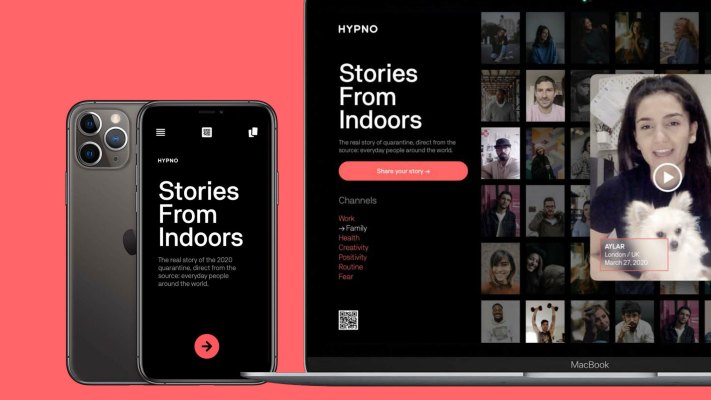Making the Tech Workplace Work Better in 2023
The hand-wringing over the employer-employee dynamic has been non-stop ever since the pandemic sent people scurrying for home-office cover nearly three years ago. The cycle has played out almost like the stages of grief. The Great Resignation and Quiet...

The hand-wringing over the employer-employee dynamic has been non-stop ever since the pandemic sent people scurrying for home-office cover nearly three years ago. The cycle has played out almost like the stages of grief.
The Great Resignation and Quiet Quitting Won’t Help the Tech Workplace
Denial. Anger. Bargaining. Depression. They’ve taken various forms — including the widely chronicled Great Resignation, followed by the supposed Quiet Quitting. More recently, those have given way to grudging acceptance — and acknowledgment that the widespread layoffs in Big Tech and the specter of a global recession might mean it’s best to keep whatever job you have. For now, at least.
All of which is why, as someone with more than 20 years’ experience as a human resources executive in the tech industry, I was struck by a recent survey of workers by the Conference Board. Its main finding: People are working hard, maybe even harder than ever. What’s missing, though, is a feeling of being engaged in their work.
Finally — trend spotting I can relate to! I’ve long believed that to constructively address the stress and turmoil in our current world of work, engagement is key. Or rather, what I’ve come to refer to as The Great Re-Engagement.
How to Re-Engage to Make the Tech Workplace Work Better in the Year Ahead
And as I look ahead to what might await us in the tech industry in 2023, I’d like to offer suggestions on how employers not only can retain the tech talent they have, but to truly re-engage them in ways that will matter most. I know this is a topic ReadWrite cares about, as evident in articles like this and this. Our company is among those that, despite the current macroeconomic odds, are finding that re-engagement with their employees can reap benefits.
Success is possible, though, only if the people leading an organization remain hyper-aware of just how much has truly changed in the social contract between companies and the people who work for them.
Flexible Work Models Are Here to Stay
The game has changed — it’s no longer about where we work — but how we work best.
Workplace technology has enabled us to be more connected, collaborative, and inclusive than ever before — if we use that technology to its best advantage. Think about how much we’ve all learned about what works and doesn’t in a Zoom or Google Meet, or WebEx meeting (or whatever the app you’re using), as well as the limits to what group or one-on-one video meetings can achieve.
The New Hybrid Work Environment
I believe we’re going to see companies continue to evolve their technology, and their office-space needs to accommodate this new hybrid work environment — an environment that employees have not only become accustomed to, but seem to prefer over being in person every day.
Healthy Work-Life Balance
And yet, even with the advantages that can come with the freedom to work from anywhere and the time saved from fewer daily commutes, we’ve all experienced new types of stress. Those include the struggle to achieve a healthy work-life balance now that the boundaries between home and home office have become so blurred. And when we don’t see our colleagues every day, it can be harder to build the relationships necessary for developing and sharing a corporate culture and sense of community.
The New Type of Support System is Coming
Whether as leaders, managers, or teammates, we require new types of support systems that were not traditionally part of a company’s obligation to its colleagues.
Mental Health in the Workplace Will Become Less Taboo
In 2023, I believe we will continue to see an increase in mental health challenges for employees and their families. That’s true not only because of the work-related stresses I described above but because of the external issues like economic uncertainties, political polarization, and existential threats like climate change — all are amplified by social media, which seems designed to trigger our emotions and anxieties.
The Burnout
Many people these days admit to feeling stress and burnout about work — an admission that in an earlier era would have been considered a sign of weakness. But 20 or 30 years ago, there was a much stronger social contract. Employees had connections beyond work, whether in their places of worship or civic groups, or other forms of community engagement.
Find the Connection at Work
Today, many of those social pillars aren’t as strong as they once were, or they are simply not part of the experience of many of today’s generation of workers. Employees, despite their stresses, are hungry for a connection — not outside of their jobs but inside their work. Employers, in turn, must recognize this hunger for community and respond to it.
Access Groups
Some of the ways our company has responded is by providing access to groups and teams and conversations that speak to the social framework of community. We now have seven Employee Groups — comprised of both Employee Resource Groups (ERGs) and Employee Affinity Groups (EAGs). These groups are dynamic and passionate about driving lasting and impactful change.
Inclusive Workplace Championing
Our ERGs are designed to foster an inclusive workplace by championing underrepresented groups — including LGBTQ+, the differently-abled, people from different cultural backgrounds, women in tech, and military veterans. Our goal is for employees to feel more connected to Commvault by providing them the space to bring their unique personal attributes, be part of a community of collective thought leaders, and be advocates for diversity, equity, and inclusion.
Similar Background and Interests
Our Employee Affinity Groups (EAGs) — including family support and the environment — are designed to bring together employees with similar backgrounds or interests. They can have a powerful influence in the workplace. Both types of Employee Groups have a global reach and host monthly virtual meetings, as well as virtual all-company events, to come together from across the world to connect and inspire.
Another way that we can help our employees and colleagues feel more connected, and part of a community can be as simple as the occasional phone call — not a Zoom chat — for no reason other than to ask, “How are you?” And then pause long enough to really listen.
Vulnerability and Empathy — the Hallmark of a Great Leader
The last few years have exposed the human side of us all — both good and bad, strengths and vulnerabilities. We’re hearing from employees more and more that they want personalized interactions with leaders that emphasize empathy, support, and care.
Find Your Empathy and Guide Your Team to do the Same
“Empathy” is a word I might have been fired for if I had used it early in my human-resources career, back in the days of command-and-control corporate hierarchies. Yet, now more than ever, leaders need the tools to understand each employee’s unique journey as well as the benefits to support them. Leaders, to be effective, will need to really embrace and celebrate “being human” at work this year.
What’s more, if the people at the top of the org chart made their way up as command-and-controllers during their careers, there’s a good chance that the mid-tier managers below them have been steeped in this same tradition.
Less Hierarchical
In fact, though, in today’s “flatter” organizations, where lines of reporting are less hierarchical, and people at all levels are encouraged to communicate with whomever they need to in order to do their best work, I think mid-tier managers may have it harder than ever to actually supervise teams.
Empathy and people skills are just as important for team leaders as they are for the occupants of the C-suite. The point is: We all need to recognize the value of being human beings first. That’s an attitude our company was cultivating even before the pandemic, and we’re proud that it seems to be permeating our corporate culture.
Try a Survey
Worldwide, we have about 2,800 employees. A few months ago, we conducted an internal survey to gauge our progress in this regard. We were delighted that we had our highest participation rate ever for an employee survey — more than 80 percent.
And more than 600 of the respondents took the time to not only check the boxes but write fuller responses — an exceptional rate of engagement. Always looking for the higher gear, we have combed through the feedback to see where we can address friction across teams and address business challenges. Strikingly, 90 percent of all participants said they trusted their manager, and nearly as many said they believe their managers cared about them as people.
Conclusion
As a Chief People Officer, I’m proud of what we, the people, have achieved in this new, still-evolving world of work. But now’s not the time to rest. We are just getting started. In the year to come, we’ll aim to keep making progress on our collective effort in The Great Re-Engagement — to continue making the tech workplace work even better.
Learn to Adapt
To continue adapting our organizations to the new flexible work paradigm, we aim to make sure we’re doing all we can to foster a sense of community and promote mental health. We all want to continue refining our skills as leaders, managers, and colleagues in the human art of empathy as we encourage you and your organization to do the same.
From my company to yours, we wish you all the best for a successful, prosperous, and human-centric 2023.
Featured Image Credit: Photo by Mikhail Nilov; Pexels; Thank you!
![]()
Martha Delehanty
As Chief People Officer, Martha Delehanty uses her deep experience and understanding of global talent trends to advance Commvault’s employee recruitment, retention, and professional development capabilities. With more than 30 years of experience as a global human resource and business executive, she always celebrates the human side of the business. She focuses on empowering teams to thrive, regardless of market conditions. Martha is a powerful advocate for young women and underrepresented talent in science, technology, engineering, and mathematics (STEM), helping drive participation in programs like Girls Who Code, Black Girls Code, Built By Girls, WiTNY (Women in Technology and Entrepreneurship in New York), and Breakthrough Tech. Throughout her tenure, she has served on several not-for-profit boards, including 180 Turning Lives Around, a non-profit organization dedicated to eliminating domestic violence. Delehanty holds a Bachelor of Science degree in psychology from Mount Holyoke College and a Master in Business Administration degree in finance from the University of Texas. She has been happily married to her husband Kevin for over 25 years and is the proud mom to Sam, Alex, and Duke who are growing up to be pretty cool young adults!

 UsenB
UsenB 





























